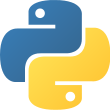 Language
Language
- Python 3
 Reading time
Reading time
- Approximately 33 days
 What you will learn
What you will learn
- Numerical Programming and Data Mining
 Author
Author
- Felix Zumstein
 Published
Published
- 4 years, 3 months ago
 Packages you will be introduced to
Packages you will be introduced to
- pandas
- Numpy
While Excel remains ubiquitous in the business world, recent Microsoft feedback forums are full of requests to include Python as an Excel scripting language. In fact, it's the top feature requested. What makes this combination so compelling? In this hands-on guide, Felix Zumstein--creator of xlwings, a popular open source package for automating Excel with Python--shows experienced Excel users how to integrate these two worlds efficiently.
Excel has added quite a few new capabilities over the past couple of years, but its automation language, VBA, stopped evolving a long time ago. Many Excel power users have already adopted Python for daily automation tasks. This guide gets you started.
- Use Python without extensive programming knowledge
- Get started with modern tools, including Jupyter notebooks and Visual Studio code
- Use pandas to acquire, clean, and analyze data and replace typical Excel calculations
- Automate tedious tasks like consolidation of Excel workbooks and production of Excel reports
- Use xlwings to build interactive Excel tools that use Python as a calculation engine
- Connect Excel to databases and CSV files and fetch data from the internet using Python code
- Use Python as a single tool to replace VBA, Power Query, and Power Pivot
The author Felix Zumstein has the following credentials.
- Prominent person behind xlwings: xlwings is open source and free, comes preinstalled with Anaconda and WinPython, and works on Windows and macOS. Automate Excel via Python scripts or Jupyter notebooks, call Python from Excel via macros, and write user-defined functions (UDFs are Windows-only). (for more information, see author's Wikipedia page)
- Works/Worked at xlwings
- Works/Worked at UBS Global Asset Management
